

Anthony Crawford
1990 Lamborghini Countach review
6 Days Ago

Design Contributor
The i20 N is the latest addition to Hyundai’s hot hatch range, tuned by the N Performance division. It was unveiled last month as a rival to the Ford Fiesta ST and the Volkswagen Polo GTI.
As a reminder, the flagship of the i20 range is fitted with a turbocharged four-cylinder 1.6-litre engine producing a respectable 150kW of power and 275Nm of torque.
Power is sent to the front wheels exclusively through a six-speed manual with the help of the optional N Corner Carving Differential (mechanical LSD). Performance credentials are on a par with the competition, with a 0-100km/h acceleration time of 6.7 seconds and a top speed of 230km/h.
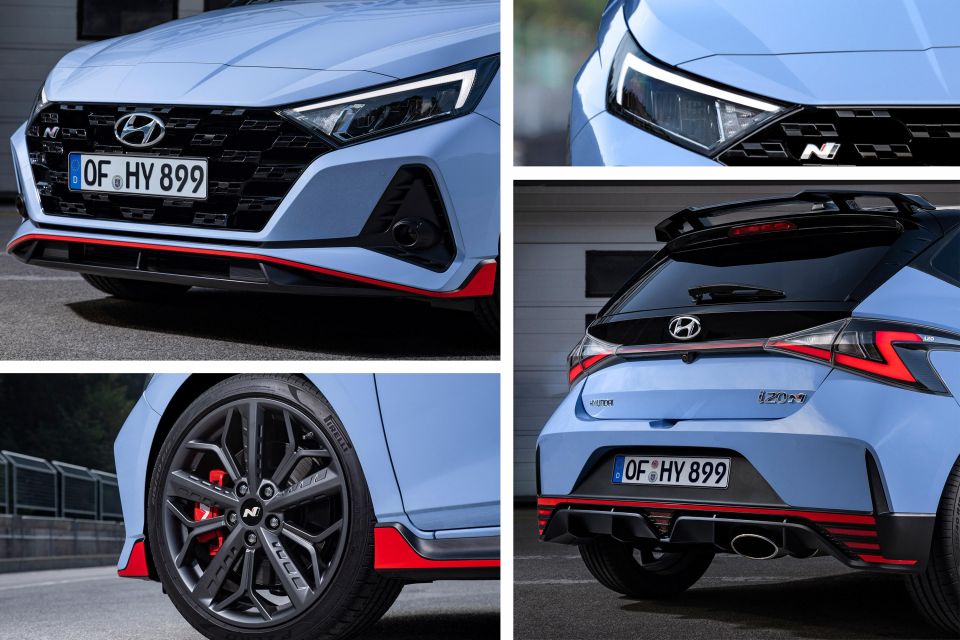
The i20 N also gets a reinforced chassis, lowered suspension with new anti-roll bars, springs and shock absorbers, reduced steering ratio, and high-performance brakes with larger discs. Last but not least, the driver has access to five selectable Drive modes through the N Grin Control System (Normal, Eco, Sport, N and N Custom).
If you want to learn more about the driving dynamics of this pocket rocket, you can check out Tony’s review of the prototype.
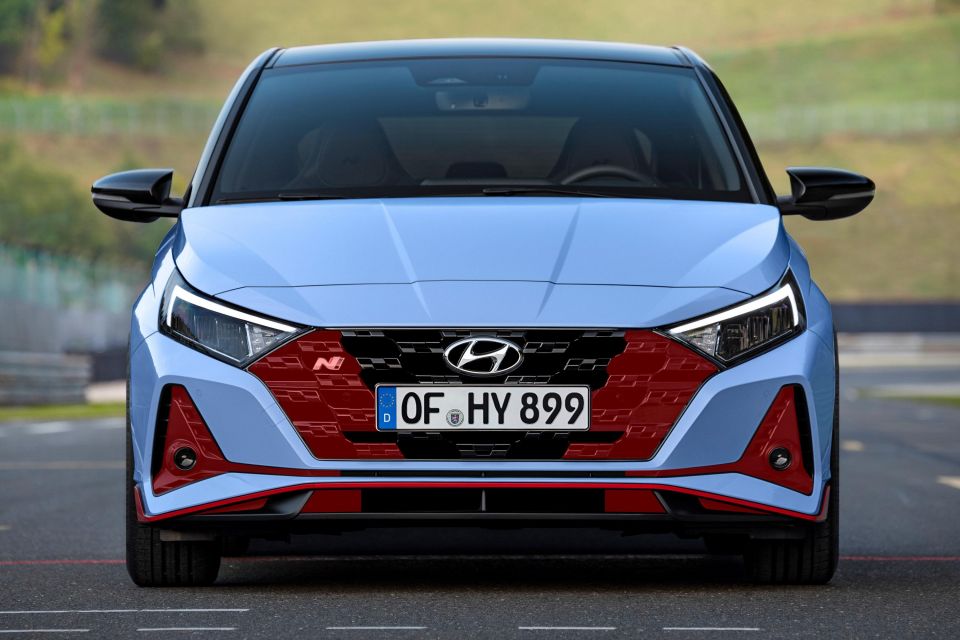
At the front, the redesigned bumper is a lot more aggressive than rest of the i20 range, but very similar to the i20 N Line (same mouldings). As you can see from the image above, a large part of the hexagonal grille is blocked (highlighted in red) and non-functional, however it creates a homogenous graphic merging with the angular LED headlights.
In a similar manner, the large side intakes in the front bumper include a functional area for brake cooling, but also have a blocked part with an interesting design incorporating the fog lights. Below is a prominent splitter with integrated fins finished in red, and a partly functional wide lower air intake.
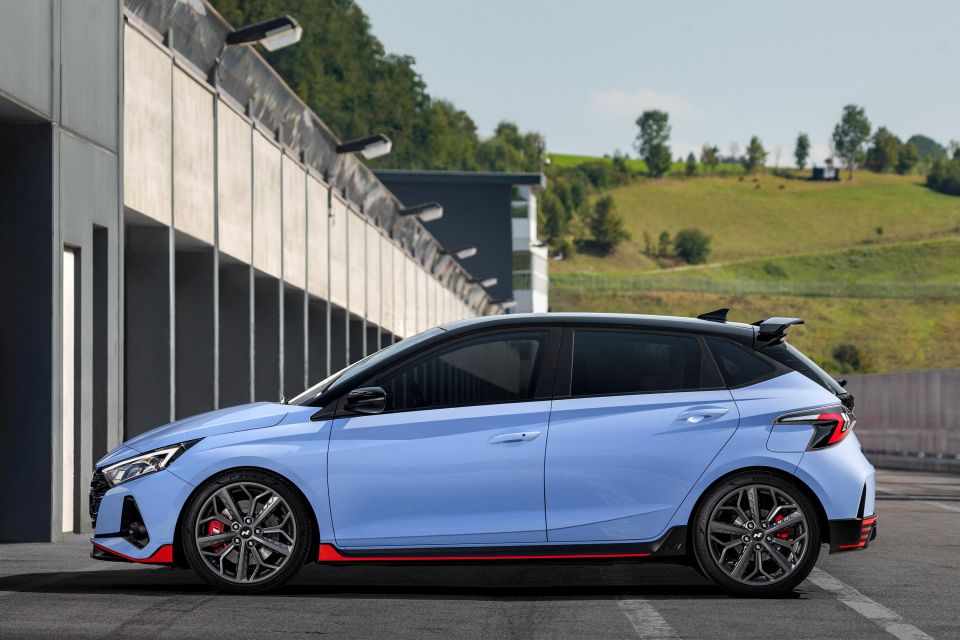
On the profile, the first thing you notice is the 10-spoke 18-inch wheels finished in grey-matte that are designed specifically for this model. They are shod in Pirelli P-Zero tires (215/40 R18) and proudly showcase the red brake calipers placed behind them.
From the looks alone you can tell that the suspension is lowered (-10 mm), while the red accents accentuate the side sill extensions bearing the N emblem and looking like a continuation of the front splitter with the same fin design (in the i20 N Line they are finished in black with no emblem).

Setting aside the redesigned aero kit, the rest of the bodywork is identical to the base i20 despite having those dynamic creases above the fenders and on the bonnet making it look quite purposeful. All of these are part of the Sensuous Sportiness design language, including the fuel-filler cap neatly integrated into the large, low-positioned tail lights.
The colour palette includes the pictured Performance Blue, but customers can also choose among Intense Blue, Polar White, Sleek Silver, Brass and Phantom Black. All of them are combined with Tomato Red accents and the optional Phantom Black roof.
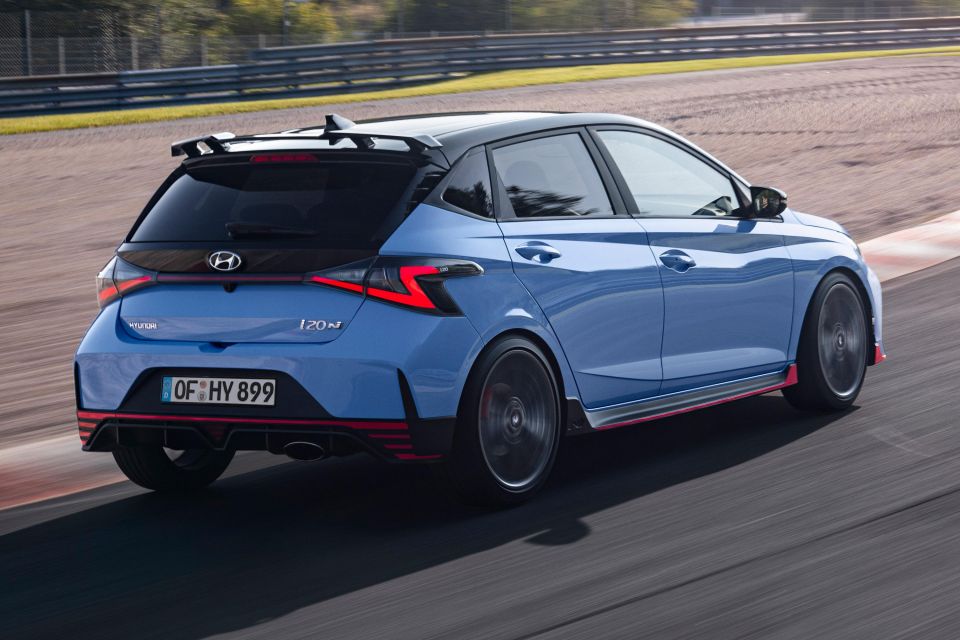
Moving over to the back, we find an additional roof spoiler sticking out above the integrated one. It looks a bit over-the-top for such a small car, though Hyundai describes it as WRC-inspired and claims it enhances downforce.
Besides the tinted windows, the N also gets darkened taillights with LED graphics and a redesigned rear bumper. The latter is very similar to the N Line with dark-coloured areas, however it is combined with a fully functional diffuser and richer red accents. Unlike the diffuser, the intakes surrounding it are not functional, neither the vertical side fins resembling inlets.
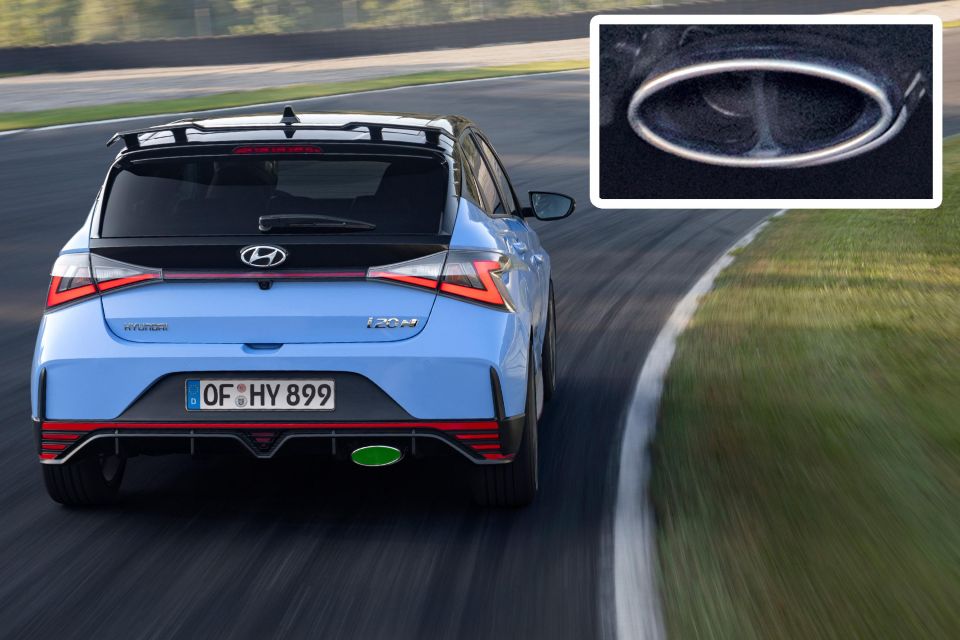
The chrome-finished oval tailpipe (replacing the non-visible tailpipe on the i20 and the dual circular tailpipes on the i20 N Line) is fully functional as you can see from the image above. Continuing in the tradition set by its bigger brother (the i30 N), the exhaust in the i20 N provides an amazing soundtrack when the N mode is selected, with proper pops and bangs, true to the spirit of a boy racer.
Inside the cabin we get an equally sporty atmosphere thanks to the sport seats with integrated headrests and many other unique features. The three-spoke leather-wrapped N Steering wheel looks similar to the EU-spec N Line (it’s not flat-bottomed) but in the full-blown N it integrates N buttons in Performance Blue colour and a red button for Rev-matching.
The N gear knob has a metal look – very similar to the i30 N – with Performance Blue stitching. The N metal pedals make a great contrast with the all-black interior wrapping up the changes over the base spec i20.
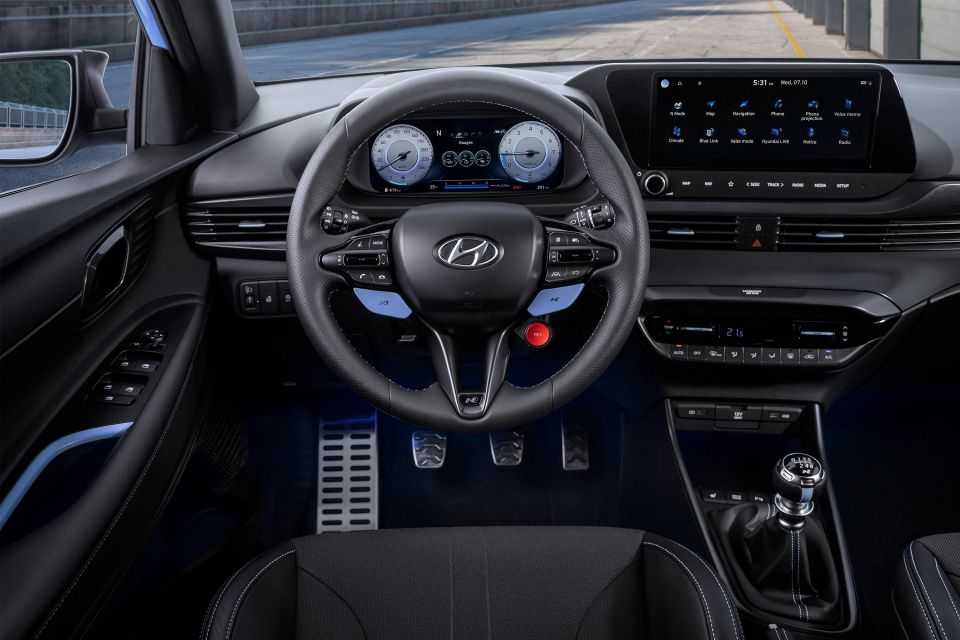
We also find a 10.25-inch digital instrument cluster with new graphics and special lights for the perfect gear change, as well as an optional 10.25-inch central touchscreen incorporating the infotainment system (Android Auto and Apple CarPlay).
The i20 N is also equipped with the Hyundai safety suite including most of the modern driver assistance systems.
Where expert car reviews meet expert car buying – CarExpert gives you trusted advice, personalised service and real savings on your next new car.


Anthony Crawford
6 Days Ago


Matt Campbell
5 Days Ago


James Wong
4 Days Ago


Max Davies
2 Days Ago


Josh Nevett
1 Day Ago


Josh Nevett
18 Hours Ago